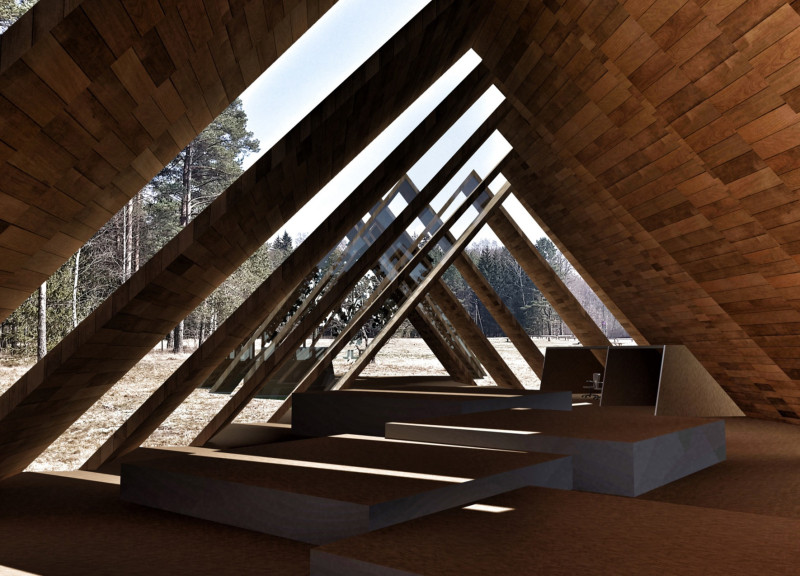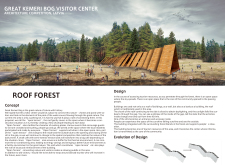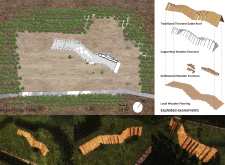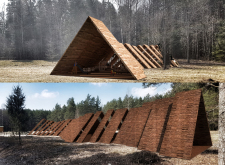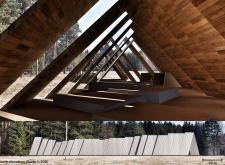5 key facts about this project
The Great Kemeri Bog Visitor Center is located in Latvia, designed to connect visitors with the natural landscape of the Great Kemeri Bog. It serves as an informative hub for both tourists and locals, encouraging exploration and appreciation of the area's ecological features. The design revolves around the "Open Terrace," a central element that merges indoor and outdoor spaces, enhancing the experience for visitors while promoting community interaction.
Design Concept
The "Open Terrace" acts as a bridge between the inside of the visitor center and the surrounding environment. It facilitates movement and encourages social interaction among visitors, creating a friendly and inviting atmosphere. By integrating the building with nature, the design fosters a sense of locality and connection to the bog’s unique environment.
Adaptability and Functionality
Functionality is a key aspect of the design. The "Open Terrace" features adjustable openings, allowing the space to adapt to different activities throughout the day. This flexibility makes it suitable for small gatherings and larger events alike, meeting the diverse needs of visitors. A café with semi-exterior seating supports the center’s role as a community space, inviting people to relax and converse.
Materiality and Structure
The visitor center utilizes a traditional thatched gable roof supported by a wooden structure. This material choice reflects the local architectural style, giving the building an authentic character. The thatched roof not only provides visual appeal but also serves as a thermal buffer, enhancing energy efficiency and comfort in varying weather conditions.
Natural Light Integration
Natural light is an important element of the visitor center’s design. Gaps in the roof structure allow sunlight to enter the interior, creating a lively atmosphere that changes throughout the day. This thoughtful design choice enhances the visitor experience and visually connects the interior with the exterior landscape, emphasizing the beauty of the surrounding bog.


